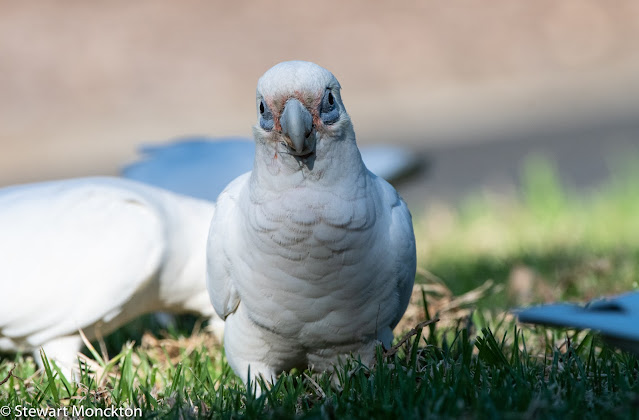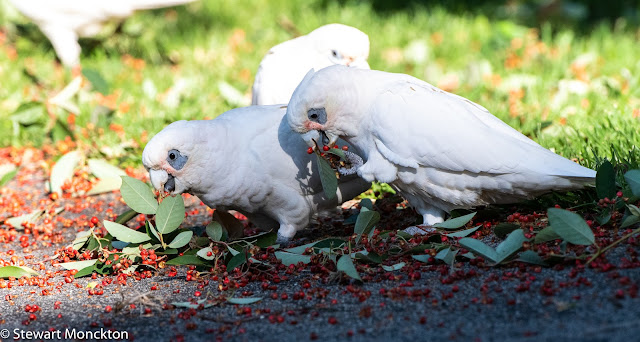The Pink Cockatoo (Lophochroa leadbeateri) was one of the birds I was hoping to see when I went up to the Mallee in NW Victoria a little while ago. They are a bird of inland, arid Australia and they are not found in my neck of the woods.
Six hours in the car fixed all that. I had not long been at my accommodation nr. Patchewollock when my hosts detected the calls of a flock of these birds in some nearby pine trees. I could not believe my luck - but it was the start of one of the better weekends of birding I have had in a very long time.
There was a small flock - maybe six or seven birds - in the trees and while they did not really cooperate on the photographic front, I got some wonderful views, and some pictures I am happy to share.
This pair of birds were doing some allopreening and also seemed to be sharing food.
This flock of birds (presumably) where in the area for most of the weekend - and although I never got any better views or pictures I often saw the birds on the middle distance. We also found 2 or maybe three birds roosting when we went out looking for owls.
The last picture in this post is not great, but it actually shows a bird perched on my hosts house! That's a heck of a garden bird! This bird dropped in to say a pre-dawn good morning before I set off for a (excellent) early morning session at a hide. It was a remarkable way to start the day.
You can see why Pink Cockatoo is an obvious name, and in the final image you can see the colour banding on the crest.
The name 'Major Mitchell's Cockatoo' may not be all that appropriate, given that they bird was not first seen by him and that there was some very poor (but predictable for the time) interactions between some of Mitchell's men and Aboriginal people during his expeditions.
I hope at least one of my regular readers is sat down when you read this (you know who you are!)
Stay safe, get vaccinated and join in with WBW by clicking on the link below:



















































